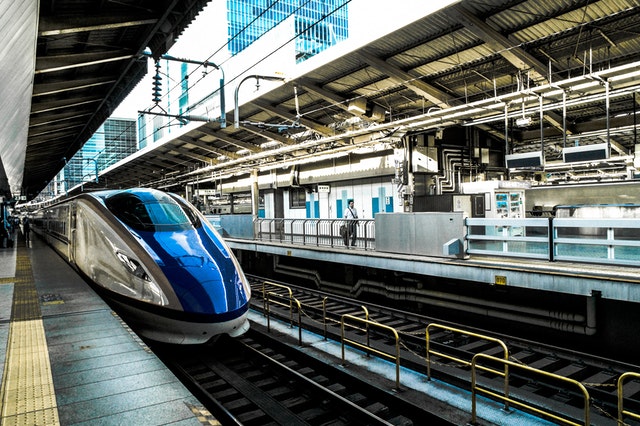
Over the last eighty years, urban transportation has been dominated by the continuously expanding use of the automobile. This domination has skewed urban design to accommodate personal mobility, while sacrificing actual accessibility. The dominance of the automobile and its infrastructure has reduced the effectiveness of other forms of human transportation.
Movement in cities is not an end in itself. We move in order to gain access to people and things. But in car-oriented cities, activities tend to spread out. This forces people to travel further and further for the same level of accessibility as before. The resulting urban sprawl creates a multitude of problems including traffic congestion, infrastructure degradation, loss of productivity, and increases in carbon emissions from vehicles.
Sustainable transportation concerns systems, policies, and technologies for the safe and efficient delivery people and products while minimizing the problems of urban sprawl. Sustainable transportation aims for the well-organized transit of goods and services, and sustainable freight and delivery systems.
The design of vehicle-free city planning, along with pedestrian and bicycle friendly neighborhoods is a critical aspect for the transformation of urban congestion into productive mobility. In addition, sustainable transportation design considers alternatives to physical movement such as telecommuting and flexible work centers that reduce or eliminate vehicular travel.
A sustainable transportation system achieves:
- Allowance for the basic access needs of individuals and societies to be met safely and in a manner consistent with human and ecosystem health, and with equity within and between generations.
- Affordable, efficient operations, choice of transport mode, and support for a vibrant economy.
- Limits on emissions and waste which are within the planet’s ability to absorb them, minimal consumption of non-renewable resources, limits on consumption of renewable resources to the sustainable yield level, the reuse and recycling of components, and minimal use of land and noise production.
Benefits of Sustainable Transportation
Creating transportation infrastructure that is conducive to moving people and products safely and efficiently with minimal vehicular traffic offers many benefits. Cities all over the world that have developed on sustainable transportation principles have been rewarded with greater community access, stronger economies, and a higher quality of life. Measures taken that enhance public transportation, walking, and cycling also produce distinct local advantages such as:
- Attraction of New Businesses
- Stimulation of Local Retail Trade and Sales
- Encouragement of High Value Land Use
- Reduction in Transportation/Infrastructure Costs
- Job Creation
- New Technologies/Services
- Greater Community Livability
How can Beyond Smart Cities help?
Beyond Smart Cities provides strategic direction on the key principles of sustainable transportation to assist urban planners, policy makers, and other stakeholders in the development of local and regional transportation infrastructure. Through extensive collaboration with local stakeholders, creative and individual solutions are developed that improve access, strengthen the community and protect environmental resources. Beyond Smart Cities facilitates an integrated approach to ensure a diversity of options and to ensure interregional equity is maintained. Our sustainable transportation services are one more way to move the world towards a sustainable future.
Beyond Smart Cities sustainable transportation strategies target the following:
Improved Access:
- Incorporate demand management to protect social and economic needs for access by altering urban form, promoting new communications technologies, and developing more efficient routes – while reducing total transportation needs.
- Provide access to varying transportation options to give the public a diversity of choices in transportation access
Urban Planning and Transportation Planning:
- Concentrate urban growth, limit sprawl and provide for more mixed land use through urban structure and land use policies. This reduces demand (especially for automobile trips) by moving origins and destinations closer together and also help reduce habitat destruction and loss of agricultural and recreational lands.
- Give priority to less polluting, lower impact modes of transportation in the design of transportation systems and urban areas. Pedestrian and cycling paths should be provided as attractive and safe alternatives to cars.
- Maintain and enhance the health and viability of urban public transit systems.
- Integrate transport modes, whether for passengers or goods, in order to provide more efficient goods movement, and to increase the availability of lower impact transportation options such as public transit.
- Protect historical sites and archaeological resources, reduce noise pollution, and consider aesthetics in the planning, design and construction of transportation systems.
Effective Transportation Decision Making Processes:
- Ensure public and private sector stakeholders coordinate their transportation planning, development and delivery activities. These transportation decisions should also be integrated with environment, health, energy and urban land-use decisions.
- Make transportation-related decisions in an open and inclusive process. Inform the public about transportation options and impacts, and encourage them to participate in decision making so that the needs of different communities (i.e. rural vs. urban; cyclists vs. drivers, etc.) can be understood and accounted for.
- Anticipate environmental or social impacts of transportation-related decisions rather than trying to react to them after they have occurred. This will result in considerable cost savings since transportation decisions often involve costly, long-term infrastructure investments.
- Consider both the global and local social, economic and environmental effects of decisions.
